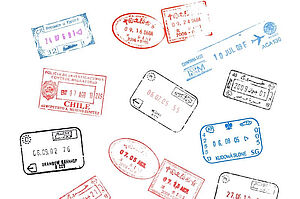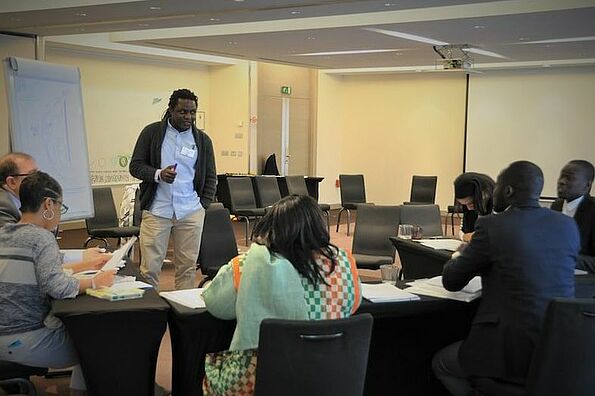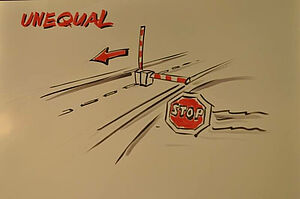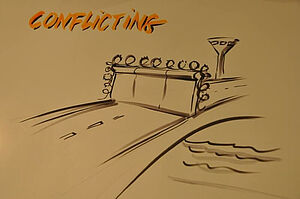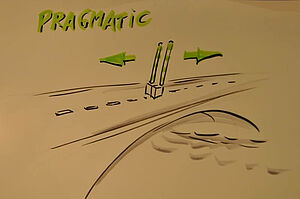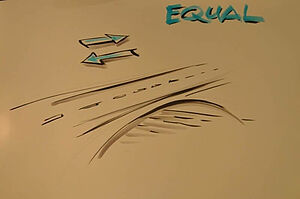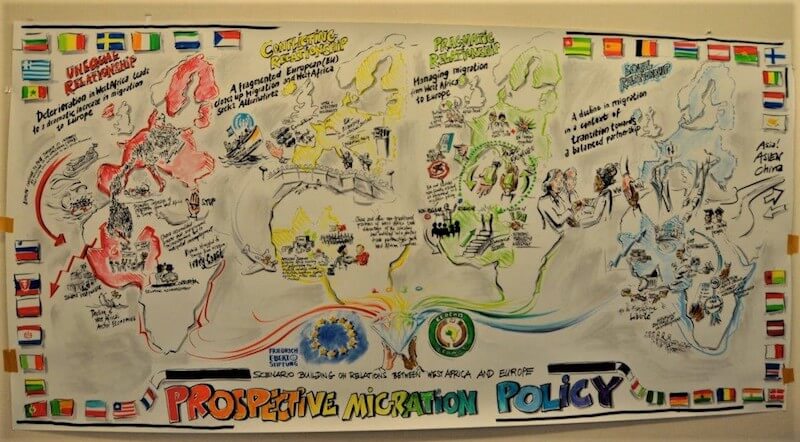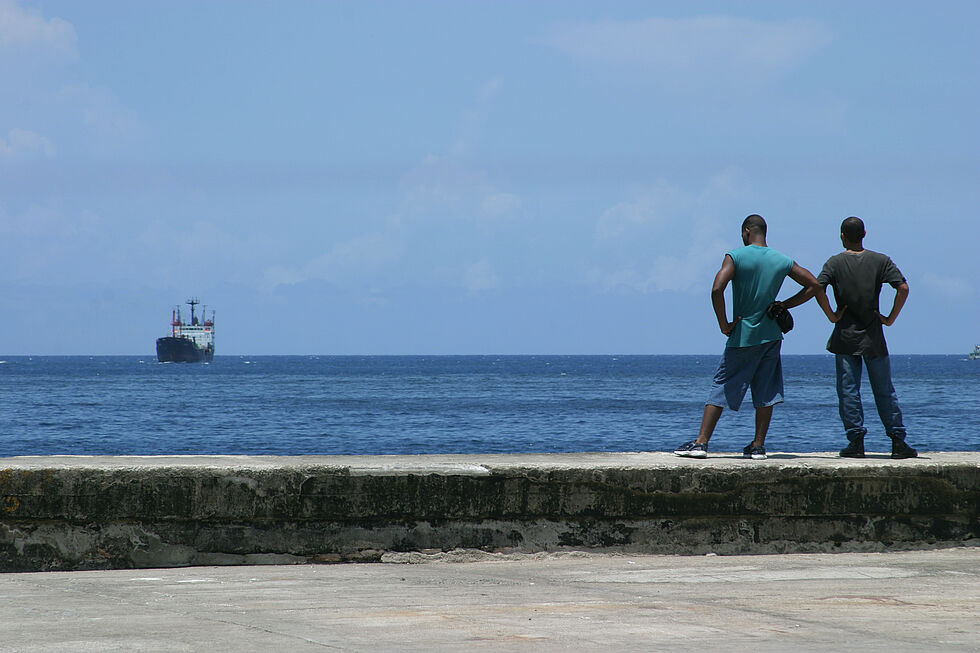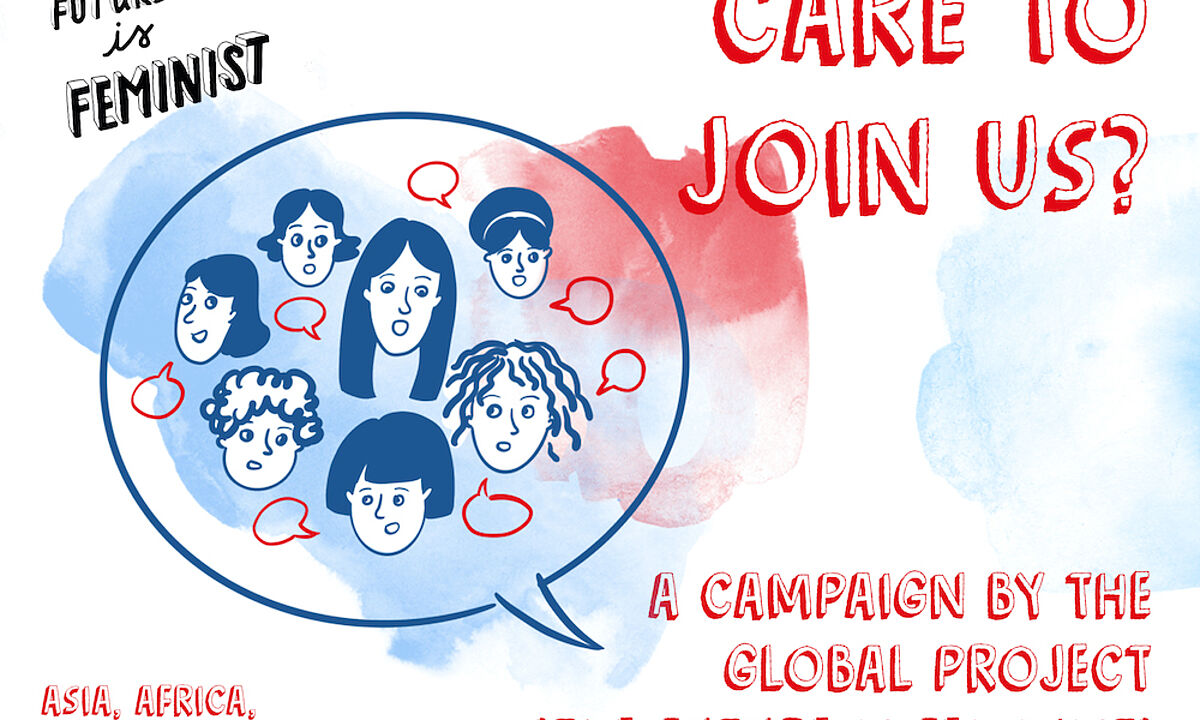Drop into the future: Migration 2030
The daily images of African migrants stranded on the beaches of Lampedusa or struggling through the Sahel have impacted public opinion and become a source of tension between the European Union and West Africa. As passions rise, serious long-term consideration of the problem can no longer be avoided. With this in mind, Friedrich-Ebert-Stiftung and the Center for Global Cooperation held a series of workshops on the topic "The future of migration policy: Building scenarios on the relations between Europe and West Africa". The four resulting scenarios, described below, are intended to shed light on what is at stake, as well as on the background context of migration policies between the two regions.
Four scenarios, one vision
The four scenarios were drawn up by a group of around 30 European and West African experts over the course of several events held in Berlin (30 June-2 July 2017), Dakar (8-10 September) and Brussels (18-20 November). This highly strategic tool will undoubtedly help to advocate for a more productive understanding of migratory movements, and to adopt a medium- and long-term approach to building more fruitful cooperation.
These four visions of the future should enable the right choices to be made today, in time.
Elisabeth Braune, Program officer at the Africa department, FES Berlin:
The more the EU puts its short-term interests at centre-stage and seals itself off, the more conflict-laden its relationship with West Africa will prove to be. This, will not reduce migration flows. In fact, in this way incentives for criminal schemes deploying multi-branched paths of irregular migration are actually growing. If the socio-economic and political starting position does not change, a one-sided cordoning off of Europe will be costly and not necessarily efficient. In contrast, an opening-up for more legal migration routes may impact the socio-economic development positively and thus contribute to a reduction of illegal migration to Europe in the medium-term.
Scenario 1 – An unequal relationship
A worsening situation in West Africa leads to a dramatic increase in migration to Europe.
In this scenario, by 2030 Africa is plagued by economic distress and virulent political crises. The failure of donor programs increases unemployment in key countries such as Nigeria and Côte d’Ivoire, where high population growth undermines development efforts. Migration to Europe from Africa increases dramatically despite dissuasive policies by the EU.
Scenario 2 – An antagonistic relationship
A fragmented EU closes its borders to migrants, and West Africa turns to alternative partners.
This would see Europe, divided and increasingly xenophobic, by 2030 implementing draconian measures to block African migrants, including cyber surveillance, big data and physical barriers at national borders. Skilled labour is recruited primarily in Asia, while West Africa would turn towards new partners to make up for the decline in European aid, notably China, Russia, India and the United States.
Scenario 3 – A pragmatic relationship
The migration flow from West Africa to Europe is jointly managed.
This configuration would see the externalization of EU borders, meaning the transfer of border management to third countries, carried out in cooperation, presenting both sides as credible partners, and effectively stemming the flow of illegal immigration. An economic upturn within the EU and the recasting of economic partnership agreements, as well as ongoing political stability, would provide a shot in the arm to the West African economy. The benefits of the Blue Card, an approved EU-wide work permit, are extended to African skilled workers.
Scenario 4 – A relationship between peers.
Irregular migration declines as the EU and West Africa transition towards a more balanced partnership.
By 2030, West Africa is undergoing fundamental change driven by popular protest movements inspired by civil society and internal forces. In this future, thanks to emerging models of governance, relations with the EU are more balanced. Migration falls as the push factors in Africa are lessened by improvements in the quality of life and decent employment opportunities for young people.
Strategic considerations
In addition to being a welcome opportunity for reflection and concerted action, the process of developing these scenarios allowed the representatives of the two continents to move beyond stereotypes, de-escalate some of the heated emotions of the debate, and better understand the value in cooperating over migration issues.
These scenarios are a valuable glimpse into the future, allowing us to reflect and act on the driving forces that steer development. Seven of these driving forces were identified as having predominant influence on migration and on cooperation policies. These are: governance; unemployment; migration policies; demography; political processes; economic policies; and insecurity. These are all strategic points of influence on which African leaders and their European partners must act in order to keep development on course.
The scenarios provide an opportunity to make the future what we want it to be. They are far from prophetic, or even firm predictions. Rather, they are intended to help decision makers understand the long-term consequences of the choices they make in the present.
It is possible to control the flow of migrants between West Africa and the EU, and significantly reduce clandestine migration, if action is taken immediately towards a best-case scenario. This is within our reach.
Adjon Guy Ghislain Danho is communications consultant / writer / English professor, participant in the drafting of the above scenarios, and member of NGO Lemissa, which promotes German culture in Côte d’Ivoire.
For more information on the work by FES on the four migration scenarios contact Elisabeth Braune at FES Africa department in Berlin.
